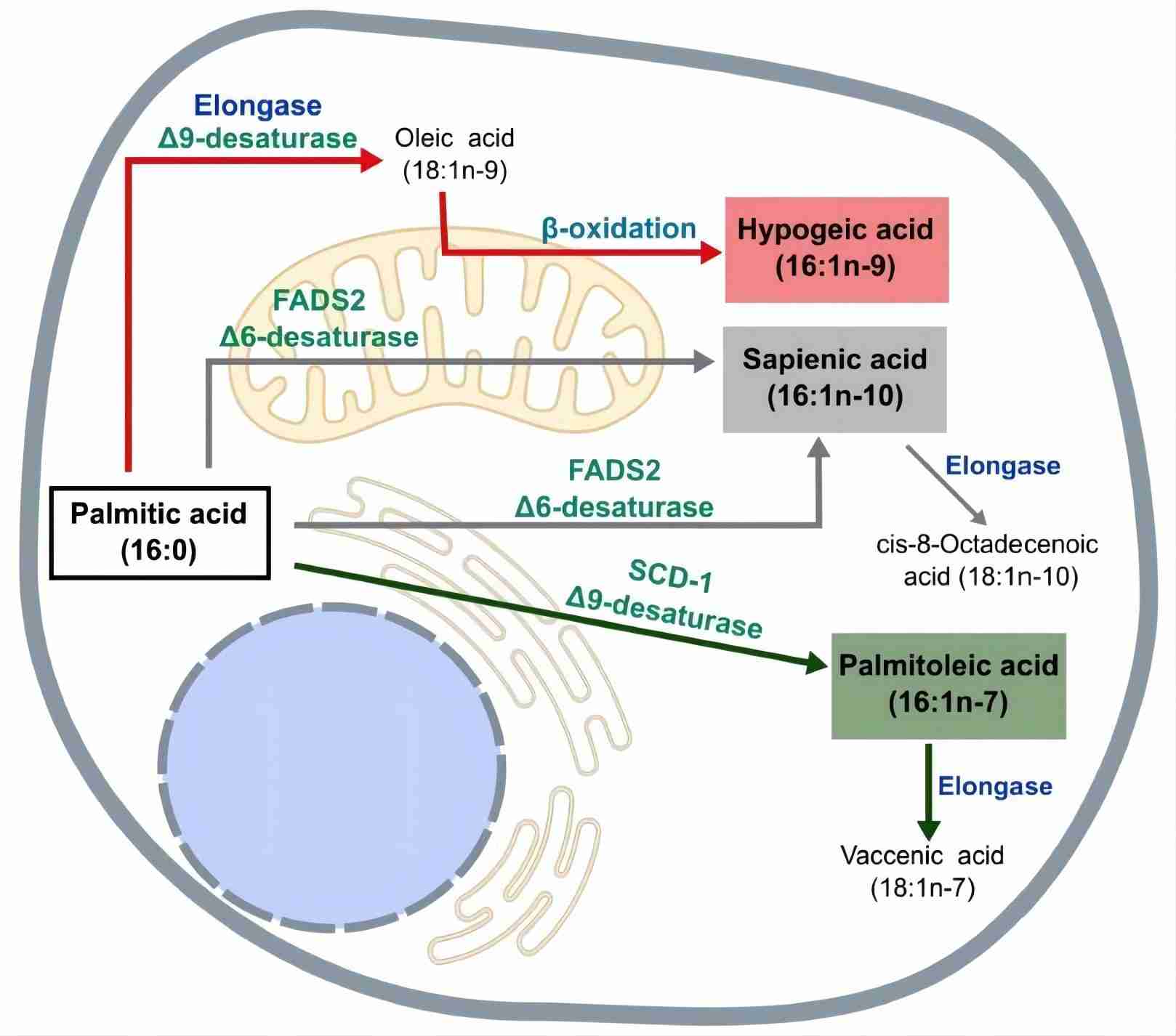For the advancement of iPSC-driven discoveries concerning acne and hyper/hyposeborrhea, Creative Biolabs utilizes FADS2 analysis for research needs.
The Function of FADS2 in Sapienic Acid Synthesis
FADS2 catalyzes the crucial first step in the synthesis pathway of sapienic acid, a rare 16-carbon monounsaturated fatty acid abundant in human sebum. This fatty acid plays a vital role in the innate immune system, exhibiting potent antimicrobial activity, particularly against Staphylococcus aureus. Reduced sapienic acid levels correlate with heightened susceptibility to S. aureus infections, as seen in patients with atopic dermatitis. Topical application of sapienic acid shows promise in reducing bacterial load and mitigating symptoms, highlighting its importance as a frontline defense on the skin's surface. Given sapienic acid's significance in human sebum, employing the Sapienic Acid Synthesis (FADS2) Analysis method holds potential for advancing drug discovery for acne and hyper/hyposeborrhea through iPSC-facilitated research.
 Fig.1 Pathways of biosynthesis of sapienic acids.1
Fig.1 Pathways of biosynthesis of sapienic acids.1
Sapienic Acid Synthesis (FADS2) Analysis in Acne & Hyper/Hyposeborrhea Research
Alterations in sebocyte differentiation are implicated in acne pathogenesis, consistent with genetic evidence linking pilosebaceous unit differentiation to the disease's development. In vitro, poorly differentiated sebocytes express elevated levels of insulin receptors, initiating a signaling cascade akin to acne manifestation upon insulin exposure. Enhanced desaturase enzyme activity (FADS2 and SCD-1) promotes the synthesis of unsaturated fatty acids, correlating with heightened LOX activity. Notably, 15-LOX-2 facilitates the conversion of linoleic acid (LA), the natural substrate for FADS2, preferentially desaturating palmitate to generate sapienic acid, triggering inflammatory cytokine production and hydroperoxide generation. In acne patients, a 5-LOX inhibitor has demonstrated efficacy in reducing inflammatory lesion counts.

Creative Biolabs provides a refined protocol for sapienic acid synthesis (FADS2) analysis within our iPSC-facilitated drug discovery framework. Techniques encompassing protein profiles provided are assessed through Western blotting and ELISA; mRNA abundance is determined via real-time RT-PCR, while lipid composition and lipid oxidation are analyzed using gas chromatography, mass spectrometry, and spectrophotometric techniques.
To forge innovative paths for scientific inquiry into acne and hyperseborrhea, especially for the assessment and discovery of active pharmaceutical agents, Creative Biolabs presents a cutting-edge human sebocyte model derived from iPSCs. Renowned for their enhanced genomic stability, abundant supply, and exceptional inter-batch reproducibility, iPSC-derived cells emerge as a robust tool for research into treatments for acne & hyper/hyposeborrhea. For further information or tailored services, please contact us with no hesitations.
Reference
For Research Use Only. Not For Clinical Use.